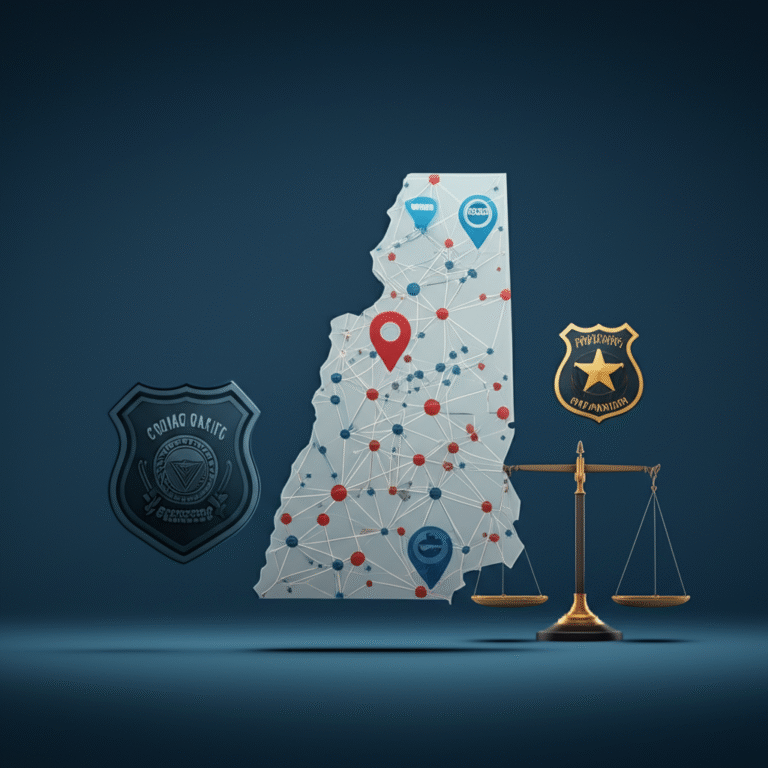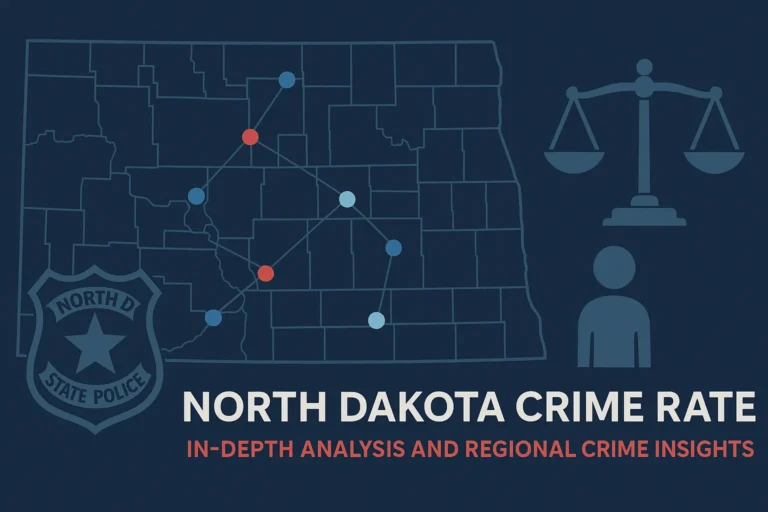Virginia Crime Rate: Comprehensive Overview and Analysis of Crime Statistics and Trends
Have you ever wondered how safe the state of Virginia really is? The subject of crime is often surrounded by myths and concerns, yet understanding its reality is crucial for everyone. Crime statistics provide valuable windows into the state’s conditions, painting a clearer picture of public safety and the challenges faced by law enforcement. The study of criminology reveals not only the patterns of violence and illegal acts but also hints at deeper social issues entwined with justice and legal systems.
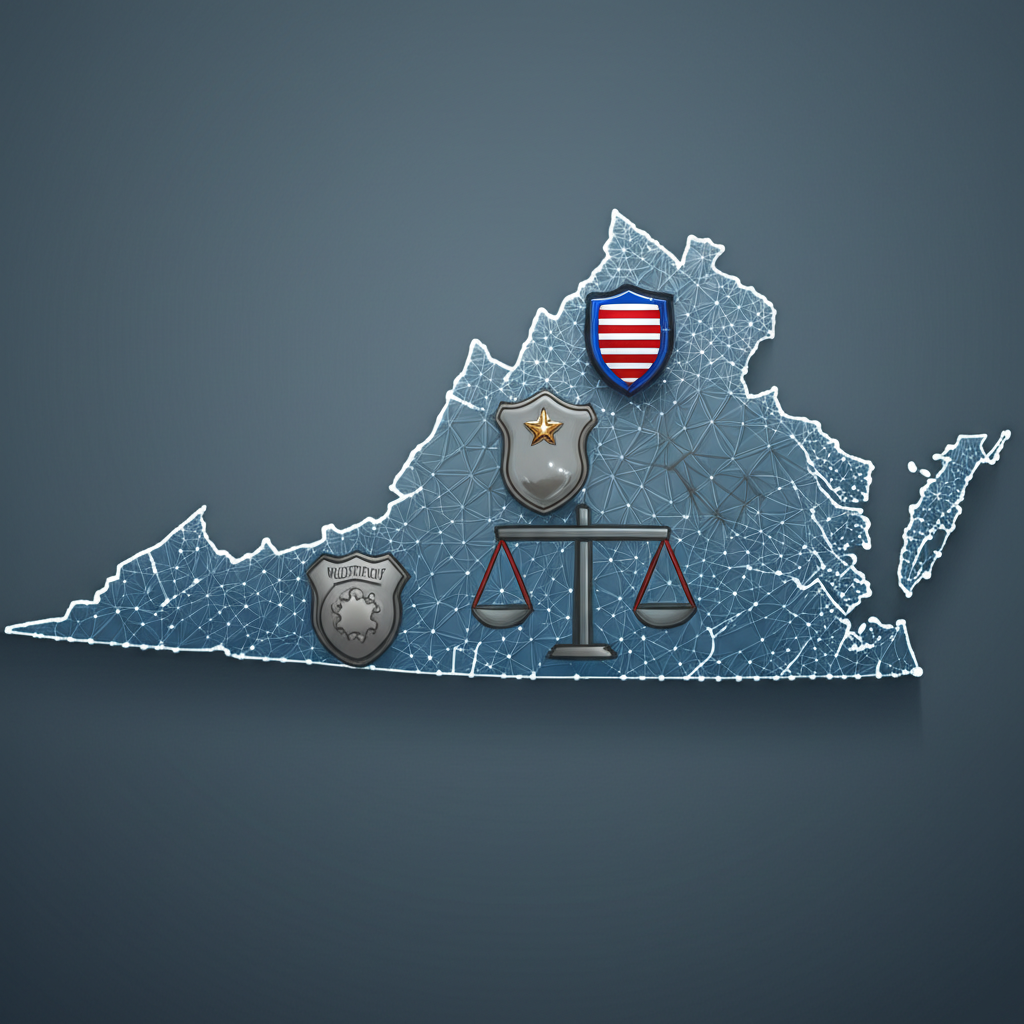
Exploring these facets uncovers how criminal justice professionals and communities strive to address these problems. By delving into legal action and its impact, we better grasp what steps are taken to maintain order. This article invites you to explore the broad landscape of crime in Virginia, helping to understand its realities and evolving trends.
- Virginia’s overall crime landscape features rates that provide insight into public safety and law enforcement efficacy.
- Crime data assists in understanding criminology, legal frameworks, and social issues impacting the state.
- Analyzing crime statistics helps policymakers, law enforcement, and citizens address violence and property-related crimes effectively.
Overview of Crime Types in Virginia
The types of crimes that residents of Virginia encounter mainly fall into two important categories: violent crime and property crime. The state’s crime statistics help us understand the frequency and nature of these offenses. Violent crimes encompass serious acts like assault, robbery, and murder, where physical harm or threat is involved. On the other hand, property crimes focus on offenses like theft, burglary, and motor vehicle theft, where property ownership is violated. These distinctions guide appropriate legal action and enable tailored responses by authorities to protect citizens and reduce harm.
| Crime Category | Total Cases Reported | Rate per 1,000 Residents |
|---|---|---|
| Total Crimes Reported | 165,155 | 18.95 |
| Violent Crime | 20,589 | 2.36 |
| Property Crime | 144,566 | 16.59 |
Detailed Violent Crime Statistics and Insights
Understanding the details of violent crime in Virginia reveals important insights about safety. While such crimes are serious, Virginia’s statistics tell a story of relative security with rates noticeably below the national median. The most common violent offense is assault, making up the majority of reported cases.
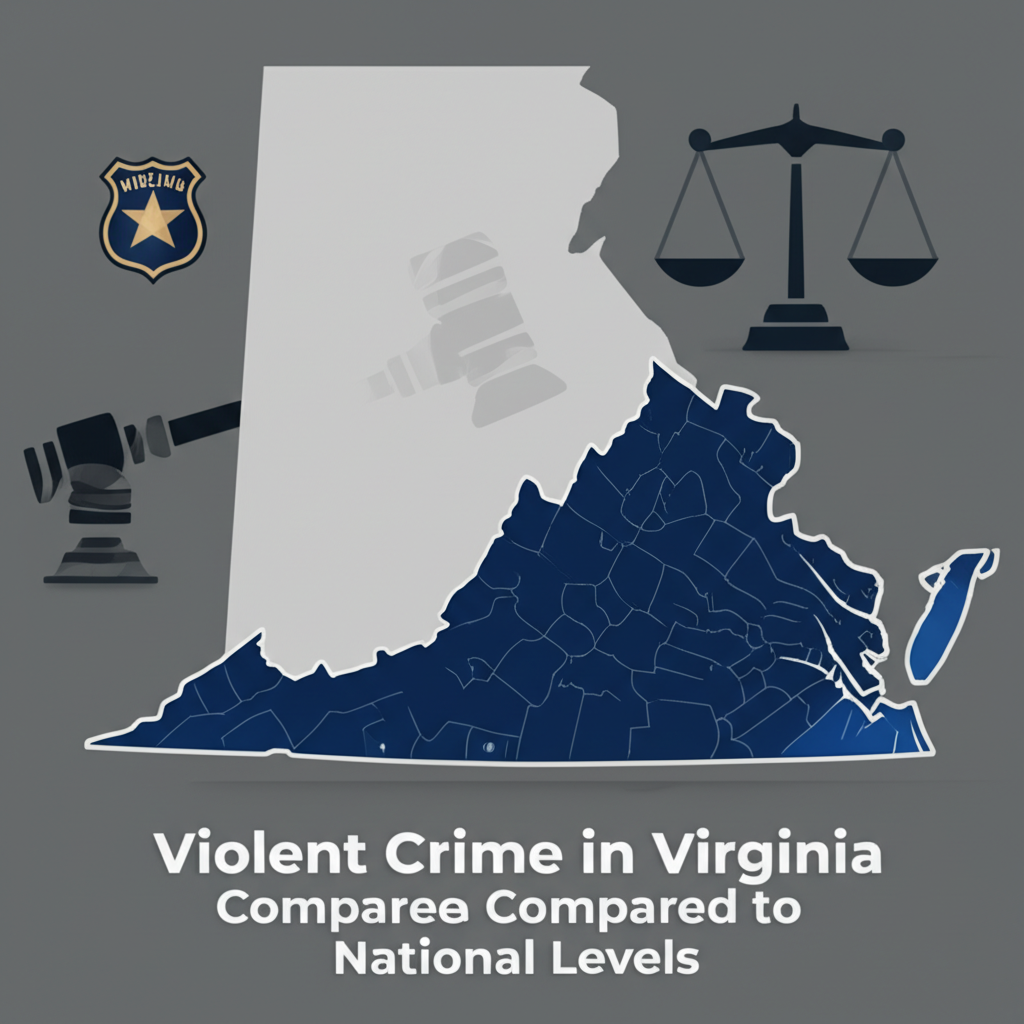
This includes physical attacks that can range in severity but contribute greatly to the overall figures. Less frequent yet more severe crimes such as murder and rape also receive significant attention due to their gravity and impact on victims. The odds of encountering such violence stand roughly at 1 in 423 residents, suggesting these incidents, though impactful, are not widespread. Studying these numbers helps shape effective prevention and intervention strategies that benefit communities statewide.
- Virginia has a violent crime rate significantly below the national median, indicating relative safety regarding violence.
- Assault is the most reported violent crime type, constituting the majority of violent incidents.
- The odds of being a victim of violent crime stand approximately at 1 in 423 residents in Virginia.
| Violent Crime Type | Reported Cases | Rate per 1,000 Residents | National Median Rate |
|---|---|---|---|
| Murder | 520 | 0.06 | 0.06 |
| Rape | 2,595 | 0.30 | 0.38 |
| Robbery | 3,283 | 0.38 | 0.67 |
| Assault | 14,191 | 1.63 | 2.64 |
Violent Crime in Virginia Compared to National Levels
When we compare violent crime rates in Virginia to the broader United States, the numbers show a consistent pattern of lower incidence. This difference supports stronger perceptions of public safety in the state, though challenges remain in certain areas. Each type of violent offense, from murder to assault, is recorded below or matching the national median rates, except for murder, which aligns exactly. Such comparisons are vital to understanding how criminal justice efforts in Virginia perform on a national scale. Resources like the FBI’s Uniform Crime Reporting provide detailed crime statistics to facilitate these analyses, helping law enforcement and policymakers refine their strategies for enhanced security.
| Crime Type | Virginia Rate | National Median Rate |
|---|---|---|
| Violent Crime | 2.36 | 4.00 |
| Murder | 0.06 | 0.06 |
| Rape | 0.30 | 0.38 |
| Robbery | 0.38 | 0.67 |
| Assault | 1.63 | 2.64 |
Understanding Property Crime in Virginia
Property crimes represent the majority of offenses reported in Virginia. These include theft, burglary, and motor vehicle theft, each affecting residents’ sense of security. Among these, theft stands out as the dominant issue, with over 118,000 cases recorded, illustrating its significant impact on individuals and communities.
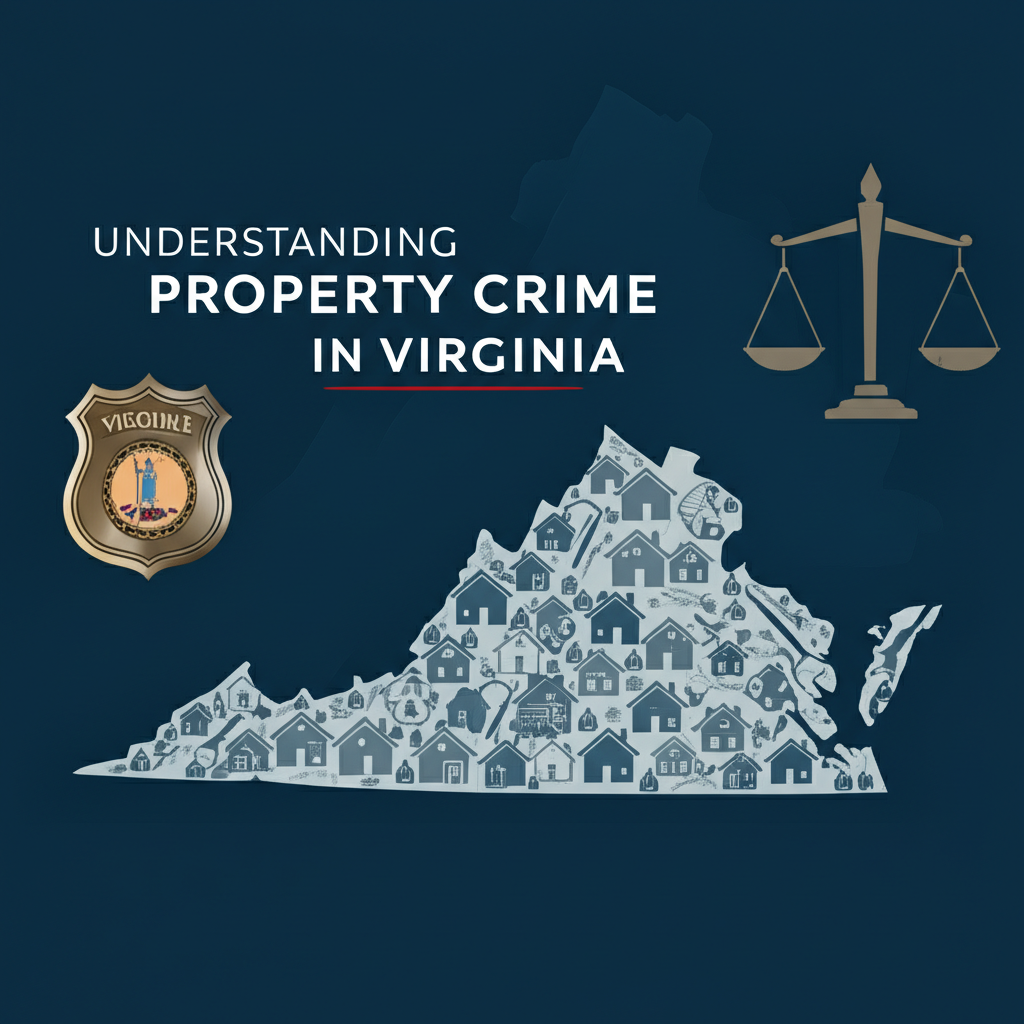
The risk of becoming a victim of such crimes is higher here, estimated at about 1 in 60 residents. Efforts in criminal law and local initiatives aim to address these challenges by improving prevention and response mechanisms. Monitoring crime statistics in this domain assists authorities in identifying trends that inform public safety interventions necessary to protect property effectively.
- Property crime comprises the bulk of criminal incidents in Virginia, with theft being predominant.
- Theft reports exceed 118,000 cases, indicating a substantial impact on residents’ property.
- The chances of becoming a property crime victim are approximately 1 in 60 for residents.
| Property Crime Type | Reported Cases | Rate per 1,000 Residents | National Median Rate |
|---|---|---|---|
| Burglary | 10,665 | 1.22 | 2.51 |
| Theft | 118,839 | 13.64 | 13.47 |
| Motor Vehicle Theft | 15,062 | 1.73 | 3.19 |
Comparing Property Crime Rates in Virginia and the USA
The comparison of property crime rates between Virginia and the entire United States reveals interesting distinctions. While burglary and motor vehicle theft rates sit noticeably below national medians, theft rates in Virginia are actually slightly above the national level. This suggests that while Virginia fares well in deterring some property crimes, challenges remain in combating theft specifically. Such insights from crime statistics encourage targeted approaches in public safety efforts to reduce these offenses more effectively. Viewing these data side-by-side offers a clearer understanding of where Virginia stands and where improvements can be made.
| Property Crime Type | Virginia Rate | National Median Rate |
|---|---|---|
| Burglary | 1.22 | 2.51 |
| Theft | 13.64 | 13.47 |
| Motor Vehicle Theft | 1.73 | 3.19 |
Crime Density in Virginia: Crimes per Square Mile
Looking at crime density, meaning the number of reported crimes per square mile, helps shed light on how concentrated illegal activity is across an area. Virginia reports about 18 crimes per square mile, which is considerably lower than the national median of 26.5. This lower density can reflect the state’s diverse urbanization patterns and population distribution. These details assist law enforcement agencies in understanding where to allocate resources and how to tailor crime prevention tactics so they effectively address the areas with higher needs. Knowing these spatial crime patterns is essential for enhancing public safety and efficient policing.
- Virginia reports 18 crimes per square mile, lower than the national median of 26.5.
- Lower crime density reflects demographic and urbanization patterns unique to Virginia.
- Crime density metrics aid law enforcement in resource allocation and crime prevention tactics.
| Location | Crimes per Square Mile |
|---|---|
| Virginia | 18 |
| National Median | 26.5 |
Safest Cities in Virginia
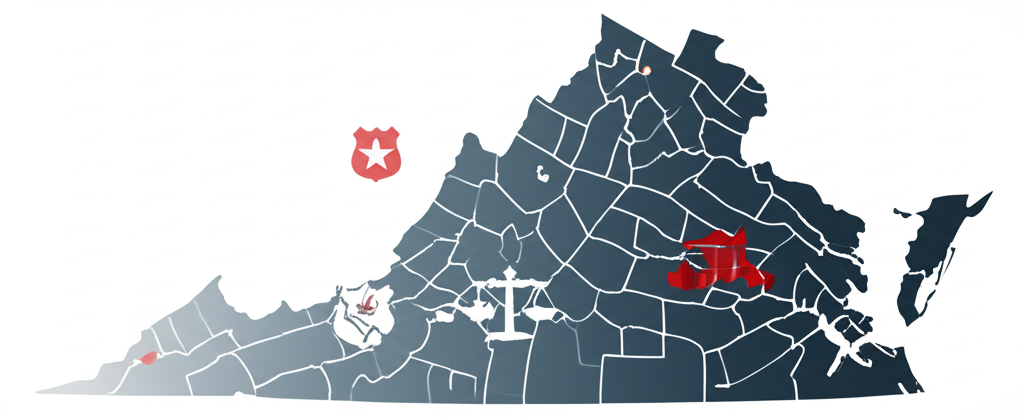
Exploring which cities in Virginia offer the greatest public safety reveals communities where crime prevention and strong social institutions have made noticeable strides. Leading the list is Eastville, recognized as the safest city in the state. Other cities like Eagle Rock, Lancaster, and Clover also boast impressively low crime rates. These areas benefit from proactive community engagement and effective local policing. The presence of such safe cities enhances stability and quality of life, making them attractive places to live and work. Understanding the factors contributing to these cities’ safety can provide valuable lessons for other areas aiming to reduce crime.
- Eastville is identified as the safest city in Virginia.
- Other cities known for low crime include Eagle Rock, Lancaster, and Clover.
- Low crime rates contribute to community stability and improved quality of life.
| Rank | City |
|---|---|
| 1 | Eastville |
| 2 | Eagle Rock |
| 3 | Lancaster |
| 4 | Clover |
| 5 | King and Queen Court House |
| 6 | Charles City |
| 7 | Capron |
| 8 | Amonate |
| 9 | Big Island |
| 10 | Lunenburg |
Popular Cities in Virginia and Crime Data Overview
Virginia is home to numerous populous and diverse urban centers that vary widely in the volume and nature of recorded crime. These popular cities like Alexandria, Arlington, and Virginia Beach receive particular attention from law enforcement due to their size and complex social dynamics. While detailed crime data for these urban areas is not always fully provided publicly, their role in shaping statewide trends is undeniable. Gathering accurate statistics from these cities is critical for organizations conducting social research and informing effective public safety policies. This ongoing work helps illuminate how urban environments uniquely influence crime patterns and responses.
- Virginia includes many populous cities with varying crime reporting standards and volumes.
- Popular cities are key areas for law enforcement focus due to their size and diverse populations.
- Accurate crime data collection from these cities helps policymakers and law enforcement strategize safety measures.
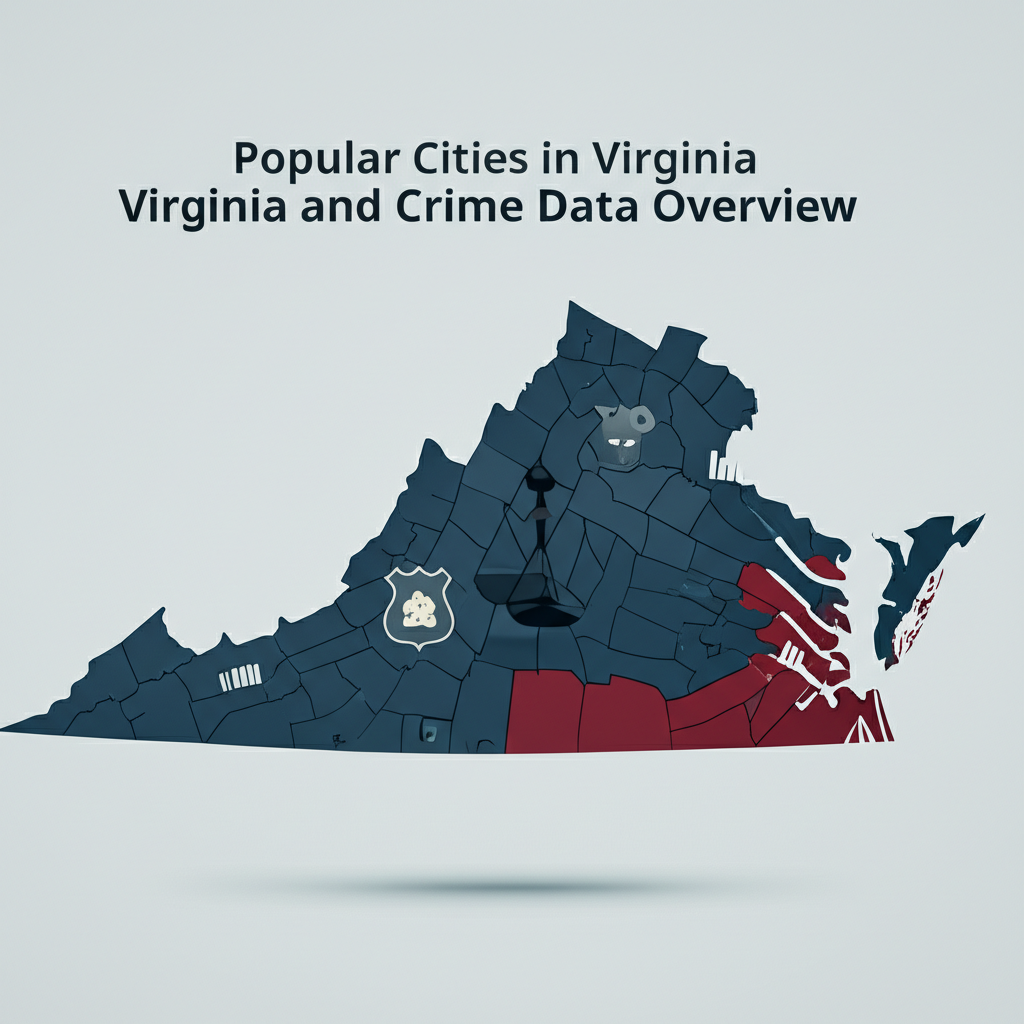
| City | Crime Data Availability |
|---|---|
| Alexandria | [city_crime_row city=”Alexandria” state=”Virginia”] |
| Arlington | [city_crime_row city=”Arlington” state=”Virginia”] |
| Centreville | [city_crime_row city=”Centreville” state=”Virginia”] |
| Chesapeake | [city_crime_row city=”Chesapeake” state=”Virginia”] |
| Hampton | [city_crime_row city=”Hampton” state=”Virginia”] |
| Henrico | [city_crime_row city=”Henrico” state=”Virginia”] |
| Lynchburg | [city_crime_row city=”Lynchburg” state=”Virginia”] |
| Newport News | [city_crime_row city=”Newport News” state=”Virginia”] |
| Norfolk | [city_crime_row city=”Norfolk” state=”Virginia”] |
| Portsmouth | [city_crime_row city=”Portsmouth” state=”Virginia”] |
| Richmond | [city_crime_row city=”Richmond” state=”Virginia”] |
| Roanoke | [city_crime_row city=”Roanoke” state=”Virginia”] |
| Stafford | [city_crime_row city=”Stafford” state=”Virginia”] |
| Suffolk | [city_crime_row city=”Suffolk” state=”Virginia”] |
| Virginia Beach | [city_crime_row city=”Virginia Beach” state=”Virginia”] |
Crime Data Collection and Analysis in Virginia
Accurate and comprehensive crime data forms the backbone of understanding crime trends in Virginia. The data is gathered from a vast network of over 18,000 local law enforcement agencies across the country, including those within the state. These statistics undergo an annual update cycle to capture evolving patterns and emerging issues.
The methodology behind the data involves a meta-analysis of millions of reported offenses, incorporating geographic details and adjustments to account for variations in reporting. Such robust datasets feed into both academic criminology research and practical public policy decisions, supporting efforts to enhance safety and justice. For more detailed information, resources like the Bureau of Justice Statistics serve as invaluable references.
- Crime data is collected from over 18,000 local law enforcement agencies across the United States.
- Data is updated annually to reflect changes and trends in criminal activity.
- Methodology includes a meta-analysis of millions of reported crimes, with geographic and statistical adjustments.
- Crime statistics provide valuable input for criminological research and public policy development.
Conclusion
In conclusion, the analysis of crime statistics in Virginia reveals a complex landscape of public safety, law enforcement, and social issues. While violent crime rates, including murder and assault, are below national averages, challenges such as theft and gender-related violence persist. The state’s criminal justice system continues to evolve, addressing these issues through legal action and community engagement. Understanding these trends is crucial for fostering a safer society and ensuring justice for all residents.

